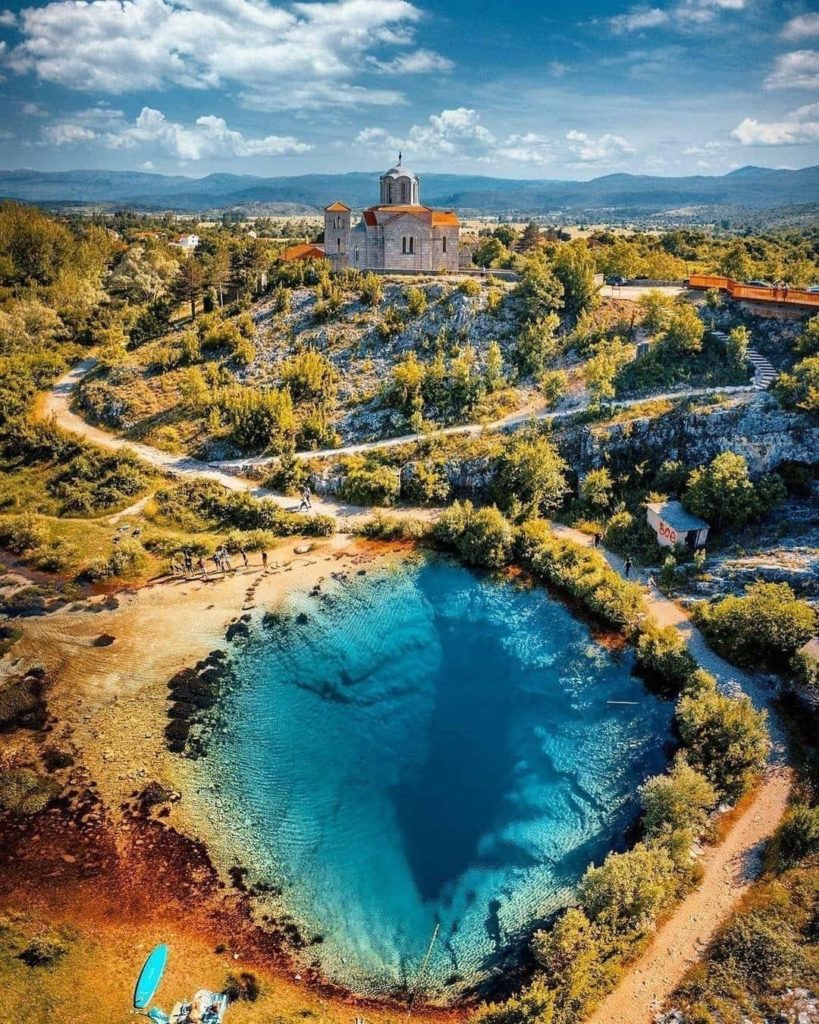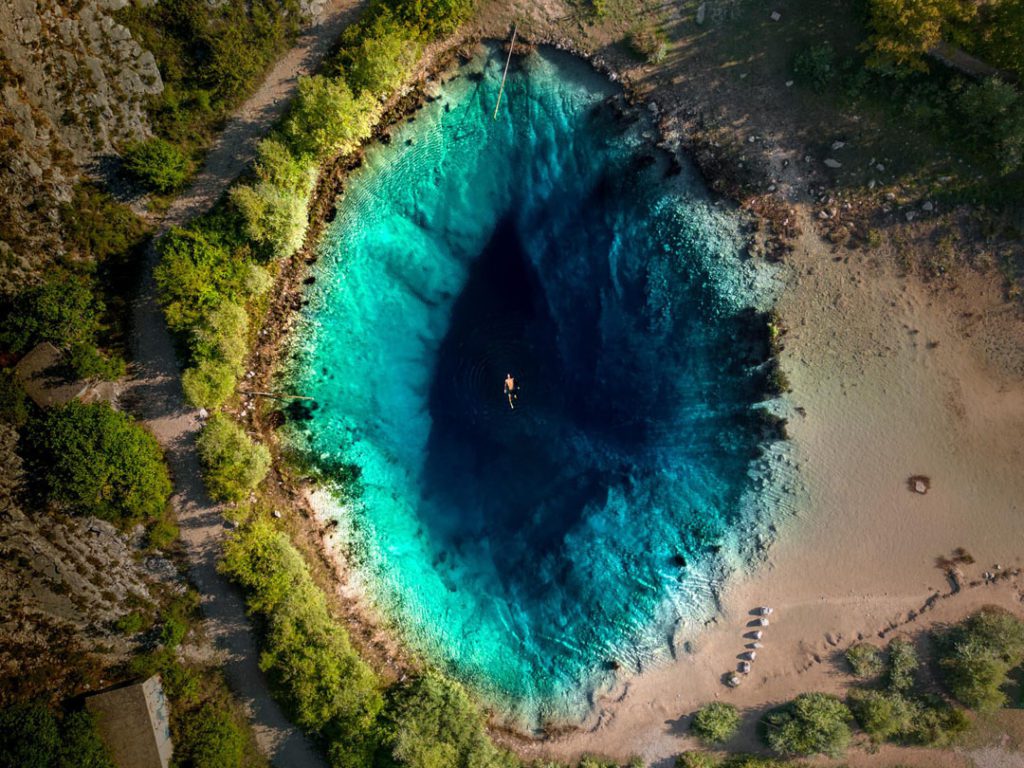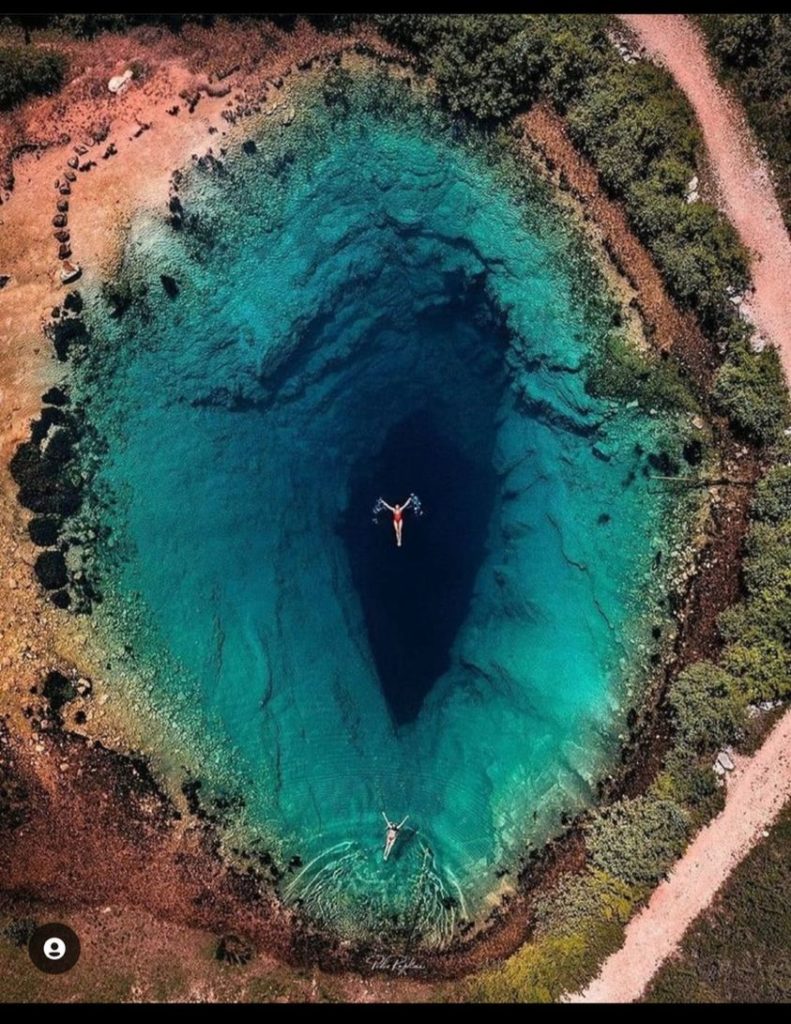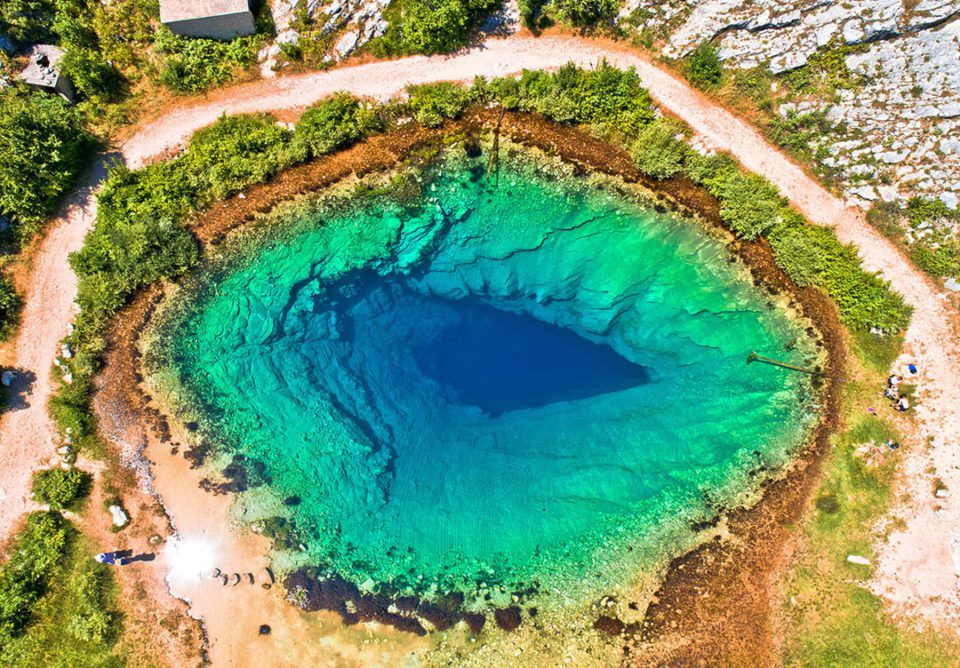The Cetina River is a stunning natural wonder located in Croatia, known for its crystal-clear waters and impressive canyon. The river has been called the “eye of the earth” due to its deep turquoise color and the way it seems to emerge from the surrounding mountains. The Cetina River is a popular destination for travelers looking to experience the beauty of nature and explore the history and culture of the region.
The Cetina River runs for about 105 kilometers through the Dalmatian hinterland before emptying into the Adriatic Sea near the city of Omis. The river has its source in the Dinara Mountains, which are part of the Dinaric Alps, and flows through the Cetina Canyon, which is one of the deepest canyons in Croatia. The canyon is over 100 meters deep in some places and offers breathtaking views of the surrounding mountains and valleys.

One of the most popular ways to experience the Cetina River is by taking a rafting or kayaking tour. These tours take visitors down the river’s rapids and through the narrow canyons, offering a thrilling adventure and a unique perspective on the stunning natural surroundings. Along the way, visitors can stop at various points to swim in the river’s crystal-clear waters or explore the surrounding area on foot.
For those who prefer a more relaxed experience, the Cetina River also offers plenty of opportunities for hiking and cycling. The river’s banks are lined with scenic trails that wind through the surrounding forests and meadows, offering stunning views of the river and the surrounding mountains. Visitors can also take a dip in the river’s natural pools or enjoy a picnic on its banks.
In addition to its natural beauty, the Cetina River also has a rich cultural history. The river was an important trade route during the Roman era, and many ancient ruins and artifacts can be found along its banks. The river was also an important source of power for the region’s mills and factories, and many of these historic buildings can still be seen today.

Can you swim in the Cetina River?
Yes, swimming is possible in the Cetina River. The river is known for its crystal-clear waters, which are clean and safe for swimming. Many tour operators offer swimming stops during rafting and kayaking tours, and there are also several natural pools along the river’s banks where visitors can swim. However, it’s important to note that the water temperature can be quite cold, especially in the spring and fall, so visitors should be prepared accordingly. Additionally, visitors should always exercise caution when swimming in any natural body of water, and should only swim in designated areas.
How cold is Cetina River?
The temperature of the Cetina River varies depending on the season and weather conditions. In the summer months, the water can reach temperatures of around 20-24°C (68-75°F), making it comfortable for swimming and other water activities. However, in the spring and fall months, the water temperature can drop significantly, often falling below 10°C (50°F). During these colder months, the water can be quite chilly, and visitors should take appropriate precautions, such as wearing a wetsuit, to ensure their comfort and safety.
How deep is eye of the earth?
The “Eye of the Earth” is a nickname given to the Cetina River in Croatia because of its unique and stunning beauty. However, the Cetina River is not an actual hole or pit, but a flowing river that passes through a canyon. The canyon is over 100 meters deep in some places, but the depth of the river itself varies depending on the location and the water levels. In some places, the river may be only a few meters deep, while in other areas it can be much deeper, up to 30 meters in some spots.

Overall, the Cetina River is a must-see destination for anyone visiting Croatia. With its stunning natural beauty, rich cultural history, and endless opportunities for adventure and relaxation, the Cetina River offers something for everyone. Whether you are looking to experience the thrill of rafting or kayaking, explore the surrounding forests and meadows, or delve deeper into the region’s history and culture, the Cetina River is sure to leave a lasting impression.

